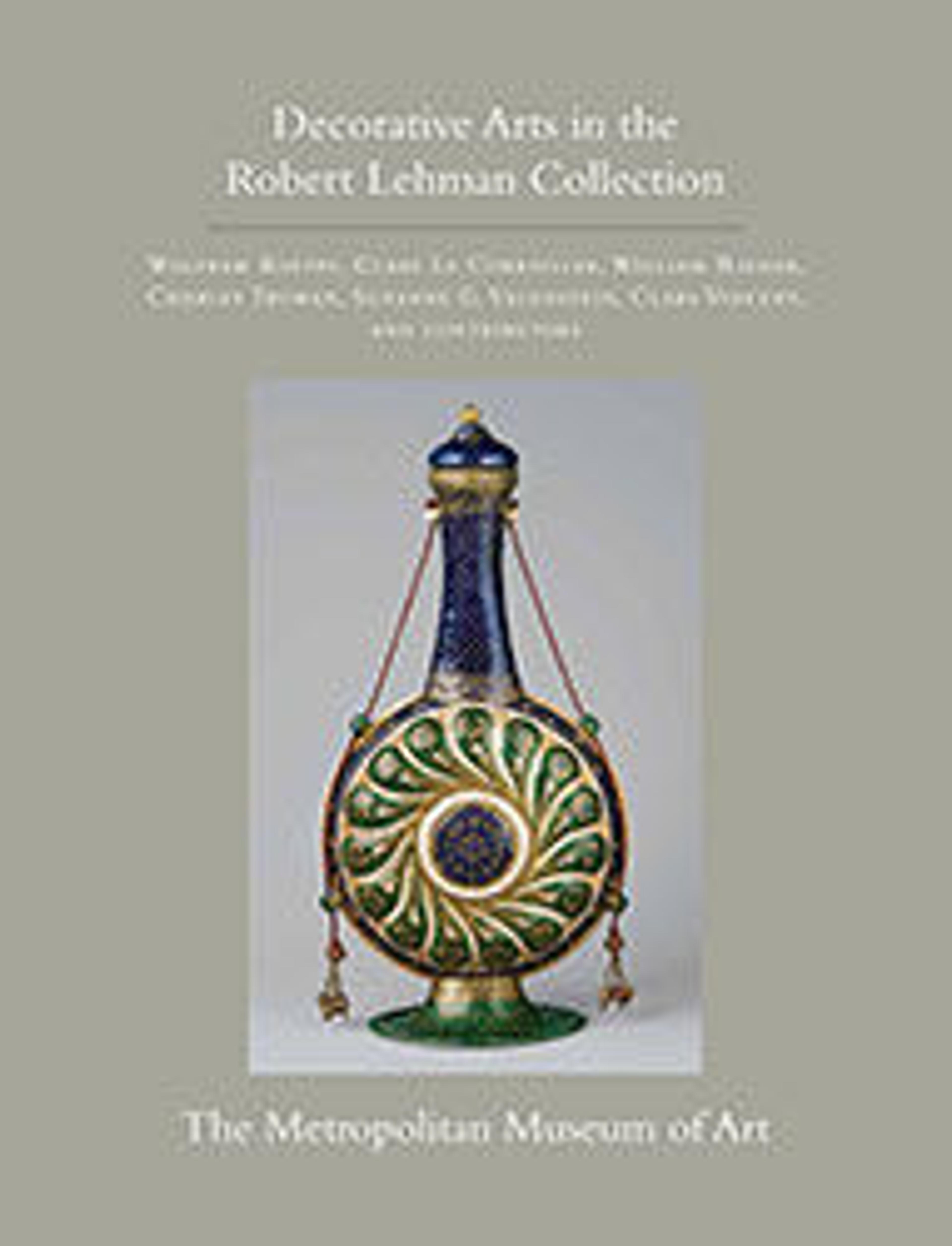Minerva, from a suite of ornament designs with grotesques and deities
Engraving, part of a series of six oval plates with ornament designs with grotesque motifs and divinities, designed by Étienne Delaune before 1559. This print represents Minerva, standing on a canopy flanked above by a grotesque mask in a shell motif, edowed with her traditional attributes: a helmet on her head, a spear on her left hand, and a shield reclining on her right leg. To either side of the goddess is an olive branch, both an attribute of Minerva and a symbol of peace, and two urns with overflowing water, likely recalling the ewer of Temperance. These urns pour water on two sphinxes, symbols of vigilance, knowledge and intelligence, which stand under Minerva's canopy. On either side of the goddess is also a leaping winged deer, an unusual attribute for Minerva: they might be symbols for prompt action, although the meaning intended by their opposition to two snails, diagonally beneath them in the print, is unclear.
Artwork Details
- Title:Minerva, from a suite of ornament designs with grotesques and deities
- Artist:Etienne Delaune (French, Orléans 1518/19–1583 Strasbourg)
- Date:before 1559
- Medium:Engraving
- Dimensions:Sheet (trimmed, oval shape): 2 11/16 × 2 1/8 in. (6.9 × 5.4 cm)
- Classifications:Prints, Ornament & Architecture
- Credit Line:Gift of Harry G. Friedman, 1962
- Object Number:62.635.59
- Curatorial Department: Drawings and Prints
More Artwork
Research Resources
The Met provides unparalleled resources for research and welcomes an international community of students and scholars. The Met's Open Access API is where creators and researchers can connect to the The Met collection. Open Access data and public domain images are available for unrestricted commercial and noncommercial use without permission or fee.
To request images under copyright and other restrictions, please use this Image Request form.
Feedback
We continue to research and examine historical and cultural context for objects in The Met collection. If you have comments or questions about this object record, please contact us using the form below. The Museum looks forward to receiving your comments.
